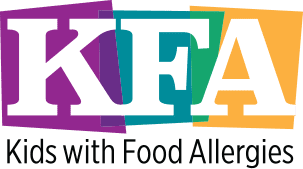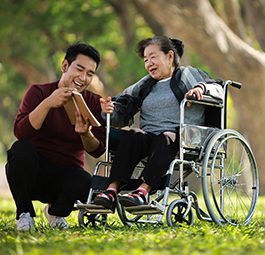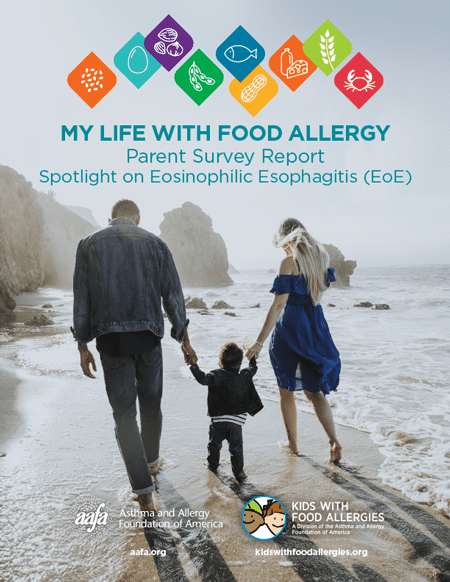Allergies
Food Allergy
A food allergy occurs when the body’s immune system sees a certain food as harmful and reacts by causing allergic symptoms. Foods that cause allergic reactions are allergens.
More than 20 million American adults and children have food allergies.1,2 We commonly hear about children with food allergies. But people can develop a food allergy at any age. Many adults develop food allergies even without a prior history of allergies.
There is no cure for food allergies. The only way to prevent an allergic reaction is to avoid the food you are allergic to. The good news is with the right steps, you can manage your food allergies and live a full life.
There are different types of allergic reactions to foods:
- Immunoglobulin E (IgE) mediated. The body’s immune system makes antibodies called immunoglobulin E (IgE). These IgE antibodies react with a certain food and cause symptoms. In the U.S., the most common causes of food allergy are these nine foods:
- Non-IgE mediated. Other parts of the body’s immune system react to a certain food. This reaction causes symptoms but does not involve an IgE antibody. Someone can have both IgE mediated and non-IgE mediated food allergies.
Not all people who react to a certain food have an allergy. They may have a food intolerance. Examples are lactose intolerance, gluten intolerance or sulfite sensitivity. Food intolerance does not involve the immune system.
There are three basic principles to managing food allergies.
Closed
1. See an allergist to confirm your food allergy.
A food allergy can affect your quality of life. A limited diet can be challenging and stressful. And if you have multiple food allergies, you may also need to make sure you are getting the right nutrition. This is why it’s important to get an accurate diagnosis if you think you have a food allergy.
If you think you have a food allergy, see a board-certified allergist if possible. They will do a physical exam, ask you about your medical history, and do allergy tests.
2. Take steps to prevent allergic reactions.
Once you confirm your diagnosis, your next step is to prevent allergic reactions. The only way to do this is to avoid your food allergen.
To avoid your food allergen, learn how to read labels to find your allergen. If you are allergic to one of the major food allergens in the U.S., the food will be listed in plain language. Sometimes foods are listed under other names (like on restaurant menus). We have created ingredient lists for many of the most common food allergens to help you recognize these foods on labels. Companies may change ingredients at any time. This is why it is important to read every label, every time.
When you prepare food, you’ll need to take care with cross-contact. Cross-contact occurs when a food allergen comes in contact with food or an item not intended to contain that allergen. This can happen in places such as home kitchens, restaurants, and on food manufacturing lines.
Recipe substitutions can help you prepare safe versions of foods you enjoy. You can also find many recipes in Kids with Food Allergies (KFA) Safe Eats® Allergy-Friendly Recipe Collection. Search nearly 1,500 recipes that are free of many of the most common food allergens. (KFA is the food allergy division of Asthma and Allergy Foundation of America.)
If you have an infant, you can take steps that may prevent a peanut allergy. Studies have shown that introducing peanuts to a child at an early age greatly reduces their risk of developing peanut allergy.
3. Be prepared to treat anaphylaxis, a severe allergic reaction, at all times
When you have a food allergy, you can be at risk for a severe allergic reaction called anaphylaxis [anna-fih-LACK-sis]. This type of allergic reaction can happen quickly, and you may need to go to the emergency room. Epinephrine is the first line of treatment for anaphylaxis.
Epinephrine comes in portable, easy-to-use devices such as an auto-injector. If you have a food allergy, keep epinephrine with you at all times. Don’t leave it in the car, at home, or in a separate building.
Work with your doctor to create an anaphylaxis action plan. This plan helps you identify severe symptoms and tells you when and how to use epinephrine.
With careful planning and resources, you can successfully manage your food allergies.
Visit our food allergy division – Kids with Food Allergies:
- Learn more about food allergies
- Find allergy-friendly recipes
- Connect with parents managing their children’s food allergies
- Get information about managing food allergies in schools
Medical Review: December 2022 by Michael Pistiner, MD, MMSc
References
1. Ng, A.E. & Boersma, P. (2023). NCHS Data Brief, no 460: Diagnosed allergic conditions in adults: United States, 2021. National Center for Health Statistics. https://dx.doi.org/10.15620/cdc:122809
2. Zablotsky, B., Black, L.I., & Akinbami, L.J.(2023). NCHS Data Brief, no 459: Diagnosed allergic conditions in children aged 0-17 years: United States, 2021. National Center for Health Statistics. https://dx.doi.org/10.15620/cdc:123250

KFA is dedicated to saving lives and reducing the burden of food allergies through support, advocacy, education and research.














